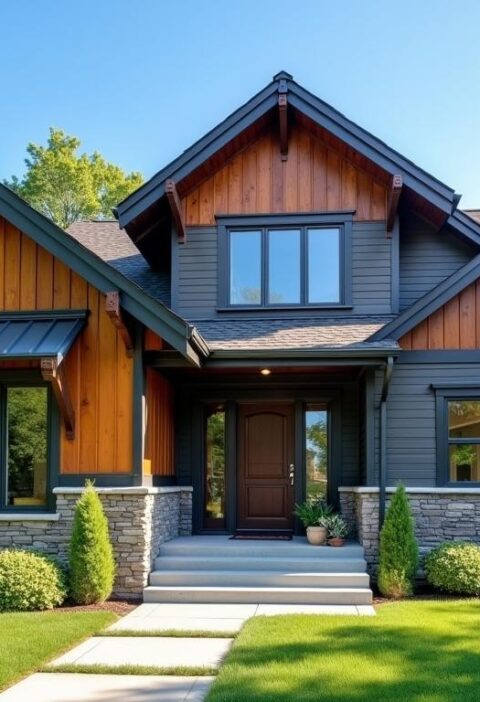When buying a new home, understanding builder warranties can help prevent unexpected costs. Having a solid warranty in place means you can sleep more soundly, knowing that major defects or issues related to workmanship won’t force you to break the bank.
Most new homeowners don’t immediately think of issues arising in a brand-new property, but reality can be different. From subtle roofing problems to plumbing mishaps, surprises can surface in even the most well-built houses. A warranty provided by the builder helps cover certain repairs early on and can save you frustration as you settle into your home. Below, you’ll find helpful insights on what to look for and how to navigate these agreements so you can feel more confident about your decision.
Why They Matter to Buyers
Builder-offered coverage is not just another document in a stack of closing papers. It’s a promise designed to protect your biggest investment your home. When you move into a place covered by the builder, you’re assured that underlying problems tied to the construction process or materials will be addressed.
Having this added layer of security feels a bit like having someone on your side, empowering you to handle unforeseen challenges. If, for instance, your brand-new roof suddenly starts leaking within the first year, you won’t have to bear all the repair costs. In many cases, the builder’s team or their designated contractor handles the fix, which can bring peace of mind and financial relief.
Common Coverage in New Construction Homes
New construction homes often come with standardized coverage that addresses specific areas of the property. Though each builder’s plans differ, you’ll usually see categories like workmanship, materials, and structural components. Workmanship and materials typically get covered for a shorter period, while structural coverage might last a bit longer.
It’s important to review these areas before you seal the deal. If you notice vague language or missing elements, clarify them with the builder. Check whether the warranty outlines the kind of repairs and replacements offered, as well as any exclusions. Being aware of these nuances helps you avoid surprises down the road.
Materials and Workmanship
In many builder warranties, materials and workmanship coverage sit at the core of the agreement. This coverage looks after items like flooring, tiling, cabinetry, and even paint jobs, ensuring they stand up to normal use during the first year or two. If you discover that a countertop is cracking abnormally or the paint is peeling off in multiple spots, you could file a claim under this coverage.
Always look at how claims must be reported and handled. Some builders require written notice before a certain deadline, while others might allow digital submissions. Knowing the process helps you act on time and sets expectations regarding the repairs you’ll receive.
Major Structural Elements
Few things are more unsettling than discovering cracks in a home’s foundation or a sagging beam. Structural components such as load-bearing walls, foundation systems, and roof framing often carry more extended coverage because they’re critical to a home’s integrity. If serious structural defects arise, the builder warranty can step in to help cover corrective measures.
While structural coverage tends to last longer than other elements, it still won’t last forever. Take a good look at how many years your builder offers for structural repairs, and consider if that length suits your comfort level. Builders who confidently stand behind their work typically extend a more robust coverage period, giving owners reassurance should serious issues surface.
How to Evaluate a Builder’s Warranty
Though it’s tempting to gloss over the fine print when you’re excited about a new house, taking time to evaluate a warranty can save stress later. One of the most important things to do is compare coverage lengths across different builders or warranty providers. Having a sense of how they stack up can help you see if your future home’s plan is standard or exceptionally generous.
Reading the entire warranty document can feel tedious, yet it’s critical. Some agreements have strict reporting guidelines or require maintenance checks, which you’ll only know if you’ve read the details. Don’t hesitate to ask questions if you find something unclear you have every right to be sure about what you’re signing.
Check the Length of Coverage
Not all builder warranties last the same amount of time. You might find coverage that ranges from one-year to multi-year protections, broken down by category. If you’re worried about certain components like plumbing systems or electrical wiring, see how long the builder covers those. Sometimes they get grouped into shorter periods, while structural coverage goes for longer.
Remember that these timelines can differ not just among builders, but also by state requirements. If you’re in a region where the law mandates certain minimum coverage, you’ll have that as a baseline. Otherwise, the length of coverage can vary, so weigh your options and consider how long you want that safety net to remain in effect.
Items Often Not Covered
While it’s great to have a warranty in place, you won’t find blanket coverage for everything. Knowing what’s excluded is just as critical as knowing what’s included. Common exclusions might include normal wear and tear, cosmetic issues that don’t affect performance, and problems caused by the homeowner’s own neglect.
Some warranties also steer clear of landscaping-related issues. If your yard fencing starts to warp or your sod doesn’t survive a harsh winter, the warranty may not handle it. Reviewing these exclusions early ensures you understand which tasks or future fixes may become your personal responsibility.
Normal Wear and Tear and Maintenance
No matter how thorough a builder’s coverage might be, standard wear and tear rests on the homeowner. That includes things like minor scuffs on walls, squeaky doors, or light scratches in the flooring. Routine upkeep, such as changing HVAC filters or cleaning gutters, usually isn’t under warranty.
Sticking to a good maintenance schedule pays dividends in the long run. A small oversight like clogged gutters can lead to bigger problems, and the warranty won’t likely apply to damage caused by insufficient care. Keeping track of your home’s maintenance ensures it stays in top shape and helps you avoid arguments with the builder later.
Damage Caused by Others
Even high-quality materials won’t withstand abuse or accidents that result from tenants, visitors, or other factors outside the builder’s control. If someone damages a door or a delivery team accidentally dents a wall, that won’t fall under builder warranties. Those types of problems typically go through your homeowner’s insurance or come out of your own pocket.
If the home experiences an extreme weather event or natural disaster, that’s also beyond the builder’s scope of responsibility. People sometimes assume that any damage is fair game, but warranties are specifically intended for issues tied to workmanship or materials. Everything else is, in most cases, up to you and your insurance provider.
Tips for Filing a Claim
When an issue arises, you’ll want to file a claim properly. Having documentation is key, so take decent photos or videos of the problem. Keep a record of all emails or messages with the builder. Written proof that you reported the issue before a deadline could make the difference between a smooth resolution and a frustrating back-and-forth.
Be prompt when noticing something that might be covered. Every warranty sets a time limit for filing, and you don’t want to wait until the day after it expires. If you’re unsure whether the problem applies under coverage, ask anyway. It’s better to clarify than to miss out on a possible repair that the builder is willing to fix.
Deciding on Extended or Third-Party Warranty Options
Some homeowners choose to purchase extended or third-party coverage if they feel they need more protection. It’s wise to weigh the extra cost against the potential savings if major defects occur beyond the initial warranty period. Third-party companies can step in after the builder’s coverage ends, though they might come with certain restrictions.
If you plan to keep the house for many years, an extended policy might offer ongoing security for rough spots like plumbing or electrical systems. On the flip side, if you’re likely to move before coverage expires, paying for a more robust plan may not be worth it. Think about your personal circumstances and how they align with the cost of additional coverage.
When to Request an Extension
Most builders alert buyers when coverage is close to expiring. However, if you’re seeing minor red flags that you suspect may worsen, consider reaching out to discuss an extension early. It might be more difficult to negotiate if you wait until the last minute.
At the same time, carefully evaluate the terms under which the extension applies. Sometimes these extended plans come at a premium, so make sure you’re getting a policy that fits your expectations. Comparing multiple third-party offers is also useful, as coverage details can vary significantly.
Key Takeaways for Potential Homeowners
Before you finalize the deal on a new house, take some time to assess the warranty closely. You’ll want clarity on the length of coverage for different aspects of the home, including materials, workmanship, and major structural features. This awareness can prevent disputes later and help you prepare a proper maintenance schedule.
Stay mindful of what isn’t covered, so you don’t rely on the warranty for routine tasks or accidental damage. Keep your documents, receipts, and records in one place to streamline any claim you need to file. A home is a big investment, and taking the time to understand how builder warranties work can save you plenty of stress and money over the life of your property.
Even with the best materials and a top-notch construction crew, small defects or major surprises can happen. Having the right coverage in place helps you approach homeownership with more confidence. In the end, being informed about your rights and responsibilities as a buyer makes your new place feel even more like home.







